Best South American Beverage Types
MAIN INGREDIENTS
Lulada is a cold, refreshing drink originating from El Valle region of Colombia, made with mashed lulos, lime juice, water, sugar, and ice. Lulo, also known as naranjilla in Ecuador and Panama, is an exotic fruit popular in Colombia.
It has a light, citrusy flavor and it’s very common in Colombian cuisine. Lulada is the perfect combination of sweet and tart, has a thick consistency and can be served with a shot of vodka.
Cholado is an icy cross between a fruit salad, a cocktail, and a frozen dessert. Also known as raspao, the beverage is prepared with fresh fruit such as strawberries, bananas, kiwi, papaya, pineapple, and maracuya, along with milk and a sweet syrup made with Colombian blackberries.
Cholado has a perfect balance of aromas and textures, and it is considered both a dessert and a drink because it is crunchy, fruity, and creamy at the same time. It is typically served cold in a tall glass with a lot of crushed ice, then topped with shredded coconut and garnished with a cherry.
Colada morada is a thick, purple-colored drink originating from Ecuador. Its origin dates back to pre-Hispanic times. The drink is made from water, black corn flour, spices (cinnamon, allspice, and cloves), various fruits (pineapple, blackberries, strawberries), and cane sugar (panela).
It’s traditionally consumed on Day of the Dead, paired with guaguas de pan — decorated sweetbreads shaped into doll-like figures. On November 2nd, families will gather around the graves of their loved ones and enjoy a picnic of colada morada and guaguas de pan, remembering their loved ones.
MAIN INGREDIENTS
Bittersweet and refreshing, Refajo is a Colombian cocktail made with a combination of Colombiana soda, pale lager, and sometimes aguardiente as well. All ingredients are typically mixed together in a chilled pitcher without stirring. The cocktail is served over ice and it is often garnished with lime and orange wedges.
Refajo is traditionally served as an accompaniment at asado barbecues throughout Colombia, where everyone has a glass of this refreshing drink in their hands while preparing copious amounts of steak, grilled corn, and potatoes.
Papelón con limón is a traditional cold drink made with only three ingredients: piloncillo, limes, and water. It’s most commonly consumed in the summer, during the hottest hours of the day. This beverage is refreshing and not too sweet, which makes it perfect for pairing with traditional Venezuelan foods such as arepas, cachapas, or hervidos.
The most important part of this beverage is papelón, also known as piloncillo, an unrefined sugarcane sweetener shaped like a cone. It is very popular throughout Latin America, and it is used in a variety of traditional beverages.
Malbec originally comes from southwest France, but recently it has become one of the most important grape varieties in Argentina, where it developed an entirely different flavor profile. Due to the unique geographic and climatic features, Argentinian Malbec usually displays fruity notes of cherries, strawberries, or plums that are complemented by soft and velvety tannins.
When aged in oak, the wine usually develops chocolate, vanilla, tobacco, or cocoa nuances. Argentinian Malbec is best paired with grilled or roasted beef, especially leaner cuts such as skirt steak, but it can also work well with pork or poultry.
THE BEST Malbec Argentina Wine Varieties
MAIN INGREDIENTS
Pisco Sour is a Peruvian cocktail made with a combination of Pisco brandy, lime juice, sugar syrup, and egg whites. The ingredients are shaken with ice and then strained into an old-fashioned glass. The cocktail is traditionally garnished with Amargo Chancho bitters, but Angostura bitters are widely used today.
The first Pisco Sour was made in the early 1920s in Lima by an American bartender Victor Vaughn Morris. Today, there is still an ongoing debate about Pisco Sour’s origin, with Peru and Chile both claiming that their nation is the home of the first Pisco.
Although Carménère originated in Bordeaux, it has virtually disappeared from its native region, and though small amounts of Carménère are planted in Italy, Argentina, and California, the grape found its true home in Chile where the majority of it is planted today.
Long considered extinct and mistaken for Merlot, this dark-skinned grape is used in blends, but it performs best as a single varietal wine. The best expressions of Chilean Carménère will display aromas and flavors of juicy red fruit that may be accompanied by herbal, spicy, and black fruit nuances.
MAIN INGREDIENTS
Guarapo is a Latin American drink made from raw, pressed sugarcane juice mixed with water, ice, and lots of fresh limes. Most often, the vendors that sell it will extract the sugar cane juice right on the spot using a metal sugar cane press.
The juice drips into a bucket below the press where it’s sieved before serving. It has a slightly sweet flavor, and it’s most popular in the summer as a cold refreshment. The word guarapo was first recorded in the 19th century by Esteban Pichardo, who defines it as a broth or a liquid made from sugarcane juice, extracted under pressure.
It is not Christmas in Chile without a glass of Cola de Mono (lit. Monkey’s Tail). There are numerous versions of this beverage, but it typically consists of milk, sugar, coffee, cloves, cinnamon, and aguardiente – distilled spirits containing between 29% and 60% alcohol by volume.
Brandy or rum are among the most common types of alcohol used in Cola de Mono. All ingredients are first boiled, cooled, then combined with aguardiente. The drink can be served hot or cold, and it is traditionally paired with a slice of pan de pascua, a traditional Christmas bread.
Best South American Beverage Producers
Café Granja La Esperanza is a leading specialty coffee producer from Colombia, renowned for its commitment to quality, innovative fermentation methods, and cultivation of rare varieties. Founded in 1945, the farm began its journey in the Valle del Cauca region with Yellow Bourbon, Red Bourbon, and Caturra varieties before expanding to estates such as Las Margaritas, La Esperanza, Cerro Azul, Potosí, and Hawaii.
Their continuous research and refinement of cultivation and processing techniques have made them synonymous with premium coffee and precision fermentation. In 2007, they gained global recognition by growing the Geisha variety in Panama, which won first place at the prestigious Best of Panama competition.
BEST Café Granja La Esperanza Coffees
Daterra Coffee – Innovation and Sustainability in Specialty Coffee Daterra Coffee is a leading Brazilian coffee plantation renowned for its innovative and sustainable practices in specialty coffee cultivation. Located in the Cerrado region, Daterra was founded in the 1980s with the mission of redefining coffee production through environmentally responsible methods.
Their farms, situated in Patrocínio, are among the oldest coffee plantations in Brazil’s Cerrado, positioned at an average altitude of over 900 meters, with some areas reaching 1,200 meters. Daterra was the first coffee farm in the world to package its green coffee in sealed vacuum packs, preserving the delicate flavor nuances throughout long overseas journeys.
BEST Daterra Coffee Coffees
Located in the heart of Chapada de Minas, Fazenda Primavera is synonymous with the production of premium Arabica coffee. Thanks to this specific geographical location, the farm cultivates Arabica varieties in a dry region, with plantations spread across flat plateaus with gentle slopes, typical of this area.
The microclimate, characterized by periods of humidity and drought, creates ideal conditions for growing high-quality coffee. At Fazenda Primavera, special attention is given to sustainable coffee cultivation. The farm has implemented techniques that minimize the environmental impact of production, and as part of long-term projects, coffee is grown alongside African mahogany, creating a unique product – Mahogany Coffee.
BEST Fazenda Primavera Coffee Beans
La Palma y El Tucán is a Colombian coffee farm, mill, and eco-tourism destination, nestled in the heart of the mountainous Cundinamarca region, near Bogotá. Known for its pioneering approach to coffee production, this farm combines sustainable agriculture, innovative processing methods, and community engagement to create one of the most prestigious experiences in the world of specialty coffee.
Their philosophy is based on the concept of symbiosis between nature and agriculture, where every element of the ecosystem is utilized in a way that promotes regenerative practices and biodiversity conservation. Coffee from this farm is distinguished by its unique flavor profiles, achieved through carefully controlled fermentation processes and meticulous cultivation under the shade of diverse vegetation.
BEST La Palma y El Tucán Coffee Beans
Tunki Coffee is a distinguished single-origin coffee originating from the Puno region of Peru. Cultivated by the indigenous Quechua and Aymara communities in the fertile soils of the Peruvian Andes, this 100% Arabica coffee is grown at altitudes ranging from 1,300 to 1,800 meters above sea level. The flavor profile of Tunki Coffee is characterized by a superb floral aroma with sweet chocolate and treacle notes, enhanced with undertones of citrus and red berries.
This exclusive organic coffee encompasses intensity of flavor, full body, and citrus acidity, offering a luxurious experience for coffee connoisseurs.
BEST Tunki Coffee Coffee Beans
Catena Zapata is a renowned Argentinian winery located in the Mendoza region, celebrated for pioneering high-altitude viticulture and producing world-class Malbec wines. Founded in 1902, this family-owned winery is led by the Catena family, who have played a crucial role in elevating Argentina's wine reputation globally.
Catena Zapata focuses on sustainable practices and meticulous vineyard management, especially in the Andean foothills, where they grow their grapes at various altitudes to enhance complexity and character.
AWARDS

James Suckling - 100 points
2024
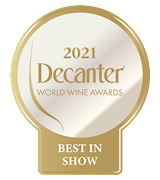
Decanter World Wine Awards - Best in Show
2021
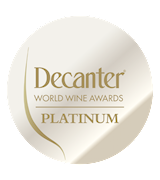
Decanter World Wine Awards - Platinum
2017, 2016
Kalvelage Distillery, founded in 2012 by brothers Marcos and Maurício Kalvelage in Blumenau, Santa Catarina, Brazil, is renowned for producing high-quality spirits. Their product line includes premium vodkas, such as Kalvelage Vodka, Kalvelage Oak Vodka, and Kalvelage Vibe, along with a London Dry Gin.
The distillery uses 100% grains in their production, implementing custom distillation and advanced filtration techniques to ensure top quality. Kalvelage was also the first in Brazil to produce vodka with American oak extract and to introduce a 5-liter Bag-in-Box packaging option.
AWARDS
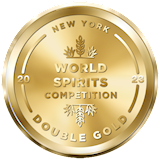
NYWSC - New York World Spirits Competition - Double Gold
2023
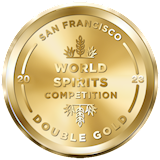
SFWSC - San Francisco World Spirits Competition - Double Gold
2023
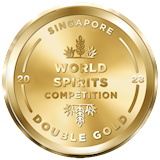
SWSC - Singapore World Spirits Competition - Double Gold
2023
BEST Kalvelage Spirits
AWARDS
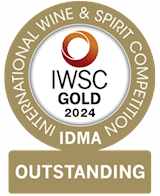
IWSC- International wine & spirit competition - Spirit Gold Outstanding
2024, 2023
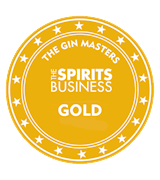
The Gin Masters - Gold
2022

IWSC- International wine & spirit competition - Spirit Gold
2021, 2020, 2019
BEST Four Pillars Distillery Spirits
AWARDS

USC- Ultimate Spirits Challenge - Chairman's Trophy
2021
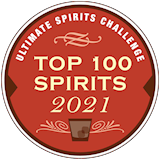
USC- Ultimate Spirits Challenge - Top 100
2021
BEST Demonio de los Andes Spirits
Tacama is one of the oldest and most prestigious wineries and distilleries in Peru, with a history dating back to the 16th century. Located in the Ica Valley, Tacama is renowned for its production of premium wines and piscos, using traditional methods combined with modern technology.
The winery is known for cultivating a variety of grapes that thrive in the region’s unique climate, producing exceptional spirits like their iconic Pisco Gran Demonio. Tacama’s long-standing commitment to quality and innovation has made it a key player in the Peruvian wine and pisco industry.
AWARDS
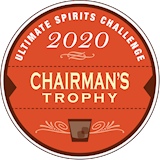
USC- Ultimate Spirits Challenge - Chairman's Trophy
2020
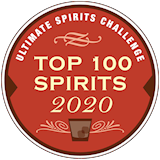
USC- Ultimate Spirits Challenge - Top 100
2020
BEST Tacama Spirits
Best South American Beverages
AWARDS

NYWSC - New York World Spirits Competition - Double Gold
2023

SFWSC - San Francisco World Spirits Competition - Double Gold
2023

SWSC - Singapore World Spirits Competition - Double Gold
2023
AWARDS
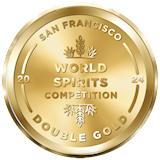
SFWSC - San Francisco World Spirits Competition - Double Gold
2024, 2023
AWARDS

SFWSC - San Francisco World Spirits Competition - Double Gold
2024, 2023
AWARDS

USC- Ultimate Spirits Challenge - Chairman's Trophy
2021

USC- Ultimate Spirits Challenge - Top 100
2021
The Pisco Gran Demonio Mosto Verde Albilla by Tacama is a premium Peruvian pisco made from Albilla grapes. It is a Mosto Verde pisco, which means it is produced using partially fermented grape juice, resulting in a richer and more aromatic spirit.
With an alcohol content of 42.5%, this pisco offers a smooth and complex flavor profile, characterized by floral and fruity notes. It is ideal for sipping neat or in cocktails, reflecting Tacama's dedication to quality and traditional craftsmanship in pisco production.
AWARDS

USC- Ultimate Spirits Challenge - Chairman's Trophy
2020

USC- Ultimate Spirits Challenge - Top 100
2020
AWARDS

IWSC- International wine & spirit competition - Spirit Gold Outstanding
2024
AWARDS

SFWSC - San Francisco World Spirits Competition - Double Gold
2024
AWARDS

SFWSC - San Francisco World Spirits Competition - Double Gold
2024
AWARDS

SFWSC - San Francisco World Spirits Competition - Double Gold
2024


TasteAtlas food rankings are based on the ratings of the TasteAtlas audience, with a series of mechanisms that recognize real users and that ignore bot, nationalist or local patriotic ratings, and give additional value to the ratings of users that the system recognizes as knowledgeable. For the “Top 100 South American Beverages” list until April 11, 2025, 4,807 ratings were recorded, of which 2,287 were recognized by the system as legitimate. TasteAtlas Rankings should not be seen as the final global conclusion about food. Their purpose is to promote excellent local foods, instill pride in traditional dishes, and arouse curiosity about dishes you haven’t tried.



























































































































































































































